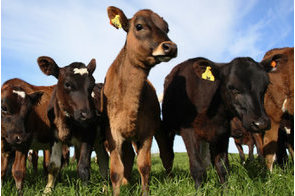Food security in Nigeria and the world by 2050 II

Summary
Despite the support from international organisations to drastically reduce food losses and wastage in developing countries, local solutions in affected communities could make a huge difference.
Every year, a staggering 1.3 billion tonnes of food is either lost immediately after harvesting, or thrown away due to bad quality or cooked but not eaten. This amount of food loss and waste (FLW) can feed the three billion people suffering from hunger across the globe. About 1.4 billion hectares or approximately 30 percent of agricultural land globally is used to grow food that is eventually wasted.
Amina Dauda – a mother of seven who grows vegetables and millet with her husband in the Hoas community of Plateau State, Nigeria – looks forward to a great harvest every planting season. She and her husband invest so much time, energy and money in cultivating various pieces of land. The entire family depends on the farm produce for their livelihood. Sometimes, her children set traps in nearby bushes to hunt animals.
The farms yield well and the family rejoices after every harvest. Their joy is, however, short-lived as they are often not able to sell all the produce at once. On many occasions, they consume the unmarketable farm produce at home or give them away. The profits realised from those taken to the market or sold to middle men cannot sustain the family till the next planting season because a good portion of the veggies gets spoilt within a few days after harvest.
Amina's story is hardly unique. Indeed, many smallholder farmers in her community and across other states and countries in Sub-Saharan Africa share similar experiences.
Food loss and wastage occur globally at various points from farm to fork, depending on the region and available technology that supports farming as well as food storage and processing. According to the Food and Agriculture Organisation of the United Nations (FAO), developing countries record about 40 percent of food losses after harvesting and during processing. Meanwhile, food wastage – as opposed to food losses – is more prevalent in industrialized countries, where more than 40 percent of food waste occurs at stores and homes after purchase.
For example, a recent report by WRAP, the British government's agency set up to promote sustainable waste management, found that one in three people trashes bananas if there is any bruise or mark on the skin. By implication, British shoppers throw away 1.4 million bananas and 178 million bags of salads every day.
In Nigeria, like other developing countries, food crops are wasted immediately after harvesting. They are either left on the farms to rot or they get spoilt, especially perishable foods, while they are being transported to the markets or when they are not stored properly. The country records huge losses of tomatoes, pepper, millet, maize, vegetables and a lot of fruits. Hence, every country or region needs to fashion its own approach to curb food loss and waste.
Kabir Olajide, a fruits and vegetables farmer in Abuja, Nigeria, told me that, “Lack of storage and processing facilities are responsible for the huge loss of watermelon in Tunga Maje, Anegada/Gwagwalada areas of Abuja. Almost every farmer in these communities grows watermelon, flooding the market with the produce after harvest. On average, at least 1,000 fruits per farm are wasted.”
According to Chidinma Peace Mbanasor, a Nigerian gender advocate and development worker, farmers in the Hoas community in Plateau State cannot provide for their families throughout the year despite their bountiful harvests of tomatoes, vegetables and millets. About 80-90 percent of farmers in this community grow these crops and they try to sell their products at the same time but there are not enough buyers.
Kabir also mentioned the unavailability of industrial offtakers for these products. He complained about middle men who are willing to buy in large quantities but offer ridiculously low prices. The farmers are not motivated to sell at the low prices and because they lack storage facilities, substantial portions of their produce get spoilt.
The challenges relating to seasonal oversupply of agricultural products, lack of storage and processing facilities are not limited to Nigeria. “In Kenya, potatoes, cabbage, tomatoes, carrots and mangoes go to waste in areas such as Nyandarua, Meru and Narok,” Mercy Lung'aho, a Kenyan research scientist for the International Centre for Tropical Agriculture (CIAT), Kenya, told me.
Mercy added that poor market information, poor post-harvest handling – especially during sorting – lack of processing facilities for cottage industries and glut – when farmers in a community grow the same food crops – are the reasons for food loss in Kenya.
“When there is a glut, in the case of tomatoes, some even feed the tomatoes to cows!” said Jemimah Njuki, Senior Program Specialist at Canada's International Development Research Centre (IDRC), Kenya.
One can clearly see that the problem of hunger and starvation suffered by an estimated 233 million people in Sub-Saharan Africa is not because food production levels are too low. On the contrary, it is due to the incredibly high level of post-harvest losses. To be sure, a number of countries in this region suffer from drought and other natural or man-made disasters that limit productivity as discussed in the first part of this series published in the previous edition of Financial Nigeria.
To tackle the challenges of food loss and wastage in Africa, a number of interventions have been initiated. For instance, the Rockefeller Foundation, in 2016, launched the YieldWise initiative, a $130 million initiative targeted at reducing post-harvest losses in Nigeria, Kenya and Tanzania.
According to Mamadou Biteye, Managing Director, Africa Regional Office, the Rockefeller Foundation, large multinational companies like Coca-Cola Company and Dangote Group are key collaborators on this initiative. He identified food loss and waste as an all-inclusive problem, which requires an all-inclusive solution.
The Foundation also partnered with Dalberg Global Development Advisors and International Institute for Tropical Agriculture (IITA) to launch a $1 million cassava innovation challenge aimed at spurring ideas to increase the shelf life of cassava in Nigeria and globally.
Locally, Dangote Farms Limited also launched a tomato processing plant in Kano last year. The plant, estimated to produce 400,000 tonnes of tomato paste annually, was set up to offtake tomatoes from farmers in order to reduce losses. However, more needs to be done to support farmers and farming communities in Nigeria and other developing parts of the world. For example, the Dangote Farm's tomato processing plant has experienced chequered operations since it was launched in March 2016 due to scarcity of fresh tomatoes and infestation on farms in Kano and other tomato-producing states.
“More than half of tomatoes and pepper produced in Gboko, Yandev, Mbakor and Abinsi communities in Benue State are lost. These farm produce are left at the Ubangaji Market to rot due to lack of buyers. This is apart from the crops that are left to rot on farms because many farmers cannot transport all their produce to markets,” said Dr. John Ona, Lecturer and a member of the Food Commodity Market set up by Benue State Government.
Despite the support from international organisations to drastically reduce food losses and wastage in developing countries, local solutions in affected communities could make a huge difference. In fact, over-dependence on foreign support in many cases does not yield the expected positive results.
The Benue State University, Makurdi, received $8 million from the World Bank as one of the bank's African Centers of Excellence (ACE). The project was designed to strengthen the capacities of participating universities and promote regional specialization in areas that address specific common regional development challenges. However, Kenneth Ati, a food crop farmer in Gboko Local Government Area of the state, feels the World Bank grant has not been properly utilized to meet the needs of farmers.
“ACE grant won by the Benue State University to focus on development and utilization of improved technologies to reduce post-harvest food losses has only helped the university to offer courses and training in this area. The practical approach has not been applied in the communities in Benue that are experiencing food losses. There's a disconnection,” said Ati.
Looking away from foreign aid, local and state governments could work with farming communities to do more. Such communities, like the ones already mentioned, could form cooperatives where farmers – with the support of the government – would pool their resources in various areas of activities such as storage and processing.
Another approach would be for communities to diversify production. This can prevent flooding the market during the harvesting season with a particular type of crop or fruit grown by majority of farmers in an area. There is also a need to link farmers to offtakers as opposed to middle men. That way, buyers are already available before farm produce are harvested.
Cottage industries could also be run by farmers or farmer groups for the processing of perishable crops, especially fruits. Government, non-government and private bodies could help provide the financial and technical training and support needed by farmers running these cottage industries. Supply chain management for the ease of distribution of the processed fruits and vegetables and other crops to potential buyers should be prioritized.
The public and private sectors must also support investment in cold chain technology – which involves transportation of temperature-sensitive products along the supply chain through thermal and refrigerated packaging methods to prevent spoilage. Temperature-sensitive products could be transported through refrigerated trucks or refrigerated cargo ships to enhance participation in the perishable value chain to reduce the amount of wastages.
Developing countries can also adopt the Hazard Analysis and Critical Control Point (HACCP) system to identify potential hazards and control them at specific points. These hazards could be biological, chemical or physical hazards that can affect the safety of food.
Food loss and wastage is a global challenge. We need to look inward to identify areas and crops prone to losses locally and adopt technologies and other approaches to curb this challenge. Otherwise, the world will end up spending too many resources to produce foods that end up as trash while billions of people go hungry every day.
Financial Nigeria Columnist, Mojisola Ojebode, is a Nigerian biochemist and the founder and product developer at Moepelorse Bio Resources. She is also a Global Innovation Through Science and Technology (GIST) awardee, a Mandela Washington fellow and an Aspen New Voices fellow.
Related
-
Zoetis secures $14.4 million grant to improve animal health in Nigeria, others
Zoetis will receive the grant from Bill & Melinda Gates Foundation to develop veterinary diagnostic networks.
-
On World Food Day 2020, UN calls for collective action to end hunger
Almost 690 million people went hungry in 2019, an increase of 10 million from 2018 and nearly 60 million in five years.
-
Edible insects as sustainable alternatives to livestock products
A paradigm shift from livestock to insects will go a long way to limit the impacts of climate change globally. The less ...







